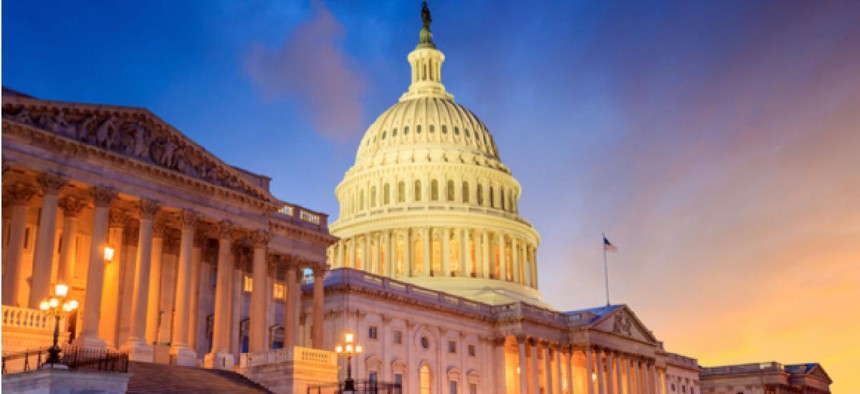Move over, ITMF?

The MOVE IT Act, which takes a different approach to funding IT modernization that the administration has proposed, may have a better chance of clearing Congress.

The Obama administration has been pushing for a $3.1 billion governmentwide IT Modernization Fund (ITMF) throughout 2016. But an alternative approach introduced just this week may have a better chance of making it through Congress this year, according to sources who have worked on the legislation.
Sens. Jerry Moran (R-Kan.) and Tom Udall (D-N.M.) plan to sell colleagues on their version of the "Modernizing Outdated and Vulnerable Equipment and Information Technology Act of 2016," also known as the "MOVE IT Act," which was introduced on July 14.
A Moran aide told FCW the bill can pass this Congress, even given the limited time lawmakers have left when they return in September. "This is really part of Sens. Moran and Udall's broader efforts to bring IT into the 21st century and we view it as a natural follow on to FITARA," the staffer said.
Rich Beutel, a former House Oversight Committee staffer and key drafter of the Federal IT Acquisition Reform Act, told FCW, said the MOVE IT Act could take two separate routes for passage: It could be added onto the National Defense Authorization Act, or move as a stand-alone bill with unanimous consent or under suspension of the rules. "I think there is a fighting chance," he said.
The House version of the MOVE IT Act also was introduced on July 14, with Reps. Will Hurd (R-Texas), Barbara Comstock (R-Va.), Gerry Connolly (D-Va.), Ted Lieu (D-Calif.) and Robin Kelly (D-Ill.) as sponsors. The bipartisan, bicameral plan has gained positive industry feedback so far.
"This bill creates an opportunity for agencies to effectively fund their IT needs for cloud computing, IT modernization, cybersecurity and future IT development," the IT Alliance for Public Sector said in a July 14 statement. "We thank Congressman Hurd and Senators Udall and Moran and their co-sponsors for their leadership and urge their colleagues to support the MOVE IT Act."
The Professional Services Council also backed the measure. "Before Congress adjourns for the year we hope that all of these ideas to improve federal IT can be drawn upon and a comprehensive bill enacted into law," PSC president and CEO David Berteau said.
One of the defining features of the MOVE IT Act is that agencies would be empowered to create their own working capital funds for IT modernization. The MOVE IT Act would make each agency the owner of its own capital fund. No new funding would accompany that autonomy. The idea is for agencies to bank their own savings from cloud transition and other updates, and to reprogram funds that otherwise would go to "operation and maintenance of legacy systems."
The administration's proposal takes a governmentwide funding approach. House Minority Whip Steny Hoyer (D-Md.) introduced a bill based on the White House proposal that would create a $3.1 billion governmentwide revolving IT fund. The bill has 20 co-sponsors, but just one lone Republican, FITARA architect Darrell Issa, is a Republican.
Industry groups have generally been supportive of the idea of a governmentwide fund as well, but some companies worry that the administration's plan would centralize too much control at the General Services Administration, which would manage the ITMF.
Hoyer stands by his legislation, however, and said it remains the sole bill that can effectively address that backlog of legacy IT.
"The MOVE IT Act is unfunded and would only be a meager step toward modernizing our government technology, which is far short of what is urgently needed," Hoyer said in a statement. "My IT Modernization Act is the only proposal on the table that has a realistic chance of upgrading many of our most vulnerable and costly legacy systems in a short time frame."
The administration has issued no formal position on the MOVE IT bill, but federal CIO Tony Scott has said publicly on multiple occasions that he welcomed other ideas for how to fund the modernization of critical systems that are teetering on obsolescence.
"If somebody's got a better idea, I'd love to hear it,” he said at one June event, but the problem "is not going to get better if we wait.”
However, Scott has also questioned the wisdom of funding modernization in a piecemeal fashion instead of with a single fund. "The idea that we would go around and tin-cup to put together the money to upgrade critical infrastructure and critical applications -- it might be possible," he said at a different June event. "But it's going to take a long time."
NEXT STORY: Video: 5 Tips to Speed Up Your Mac


